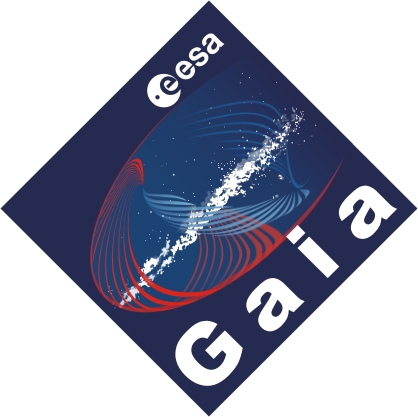
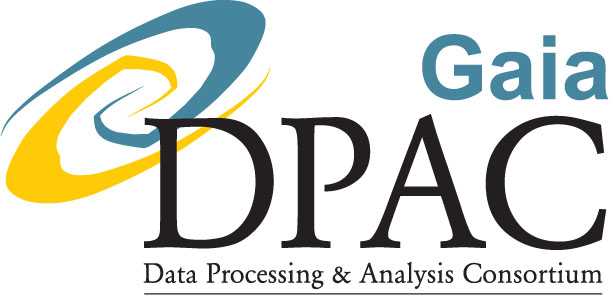

|
Galactic Census of Solar-like Stars with Gaia |

|
|
Low-mass stars, with masses close to solar or below, dominate the
stellar content of the Galaxy by number and total mass.
Their lifetime on the hydrogen-burning sequence is comparable with
the age of the Universe and therefore they represent an important
sample for studying the structure, the dynamics, and the evolution
of the Galaxy.
|
The ESA cornerstone mission Gaia, scheduled to be launched in 2011, will conduct a stereoscopic census of one thousand million stars in our Galaxy, about 1% of the entire galactic stellar population. Each target will be monitored about 80 time on average (some of them up to 200 times) over a five-year period, precisely charting their positions, distances, and space motions. Gaia will provide the detail 3-d distributions and space motions of all these stars, complete to 20-th magnitude. The measurement precision, reaching a few millionth of a second of arc, will be unprecedented. This will allow our Galaxy to be mapped for the first time in three dimensions. Some millions of stars will be measured with a distance accuracy better than 1 per cent; some 100 millions or more better than 10 per cent. 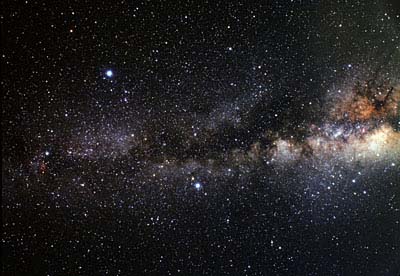
Part of the Milky Way with Vega, Altair and Deneb on the foreground. Image: ESA/NASA. Together with on-board medium resolution spectroscopy and low-resolution spectrophotometry, the information gathered will have enough details and precision to clarify the origin and formation history of our Galaxy. It will provide detail information on stellar evolution and star formation in our Galaxy. The Gaia results will precisely identify relics of tidally-disrupted accretion debris, probe the distribution of dark matter, establish the luminosity function for pre-main sequence stars, detect and categorize rapid evolutionary stellar phases, place unprecedented constraints on the age, internal structure and evolution of all stellar types, establish a rigorous distance scale framework throughout the Galaxy and beyond, and classify star formation and kinematical and dynamical behaviour within the Local Group of galaxies. 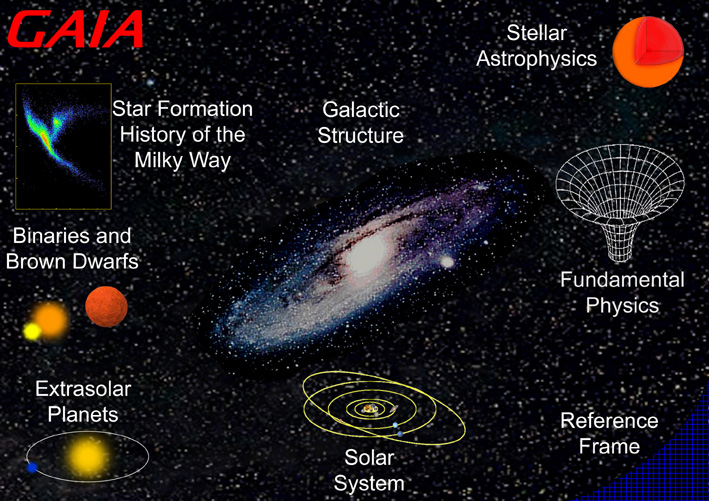
Areas of science touched by Gaia. Image: ESA Stars with masses close to solar or below (low-mass) dominate the stellar content of the Galaxy by number and total mass. Their lifetime on the hydrogen-burning sequence is comparable with the age of the Universe and therefore they represent an important sample for studying the structure, the dynamics, and the evolution of the Galaxy. Their atmospheres show solar-like activity phenomena like spots, faculae, flares and chromospheric-coronal emission from the UV to the X-rays, which are due to magnetic field generated in the stellar interior via a dynamo mechanism. This latter, in turn, depends on the stellar angular momentum evolution and, therefore, on the stellar age. 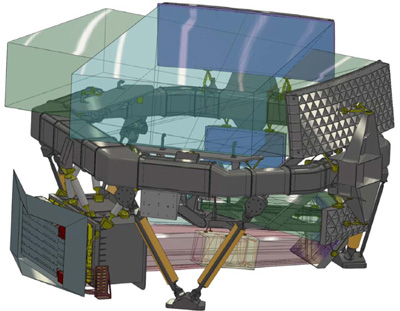
View of the Gaia payload module assembly which houses the scientific instruments. Image: ESA Despite the fact that solar-like activity affects a large fraction of stars, the statistics of its occurrence are still rather poor. Furthermore, the modelling of the dynamo mechanism generating such activity is also uncertain and, notably, cannot predict satisfactorily the stage of the stellar evolution in the main sequence in which the stellar cycles are at maximum or at minimum. In this respect, Gaia can provide an unprecedented and unique sampling of the occurrence of such phenomena with tremendous implication for our understanding of the evolution of late-type stars and their environment (e.g. planets), this latter known from recent studies and discoveries to be significantly affected by magnetic activity of the hosting stars. We estimate that solar-like activity can be detected in 4 to 10% of the total number of stars observed by Gaia. 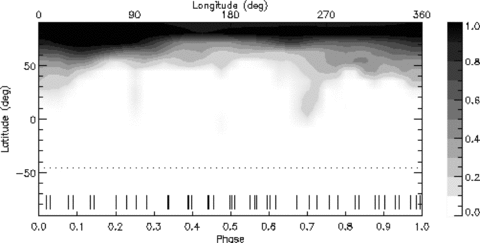
A map of LO Pegasi. Grey levels correspond to spot covering factor. From Piluso et al., MNRAS 387, p. 237 (2008) In 2006, a group of researchers from the Dipartimento di Fisica e Astronomia and the INAF - Osservatorio Astrofisico di Catania (Alessandro Lanzafame, Innocenza Busà, Giuseppe Cutispoto, Antonino Lanza, Sergio Messina, and Isabella Pagano) joined the Gaia-DPAC (Data Processing and Analysis Consortium), assuming the responsibility for the definition and implementation of the cool star analysis and the solar-like activity detection and analysis in the Gaia sample. The processing of low-mass stars data will contribute to the general data analysis of the GAIA mission by providing indication for the classification of the variability, and information on age and activity. The astrometric noise due to the presence of surface inhomogeneties on nearby late-type stars (closer than about 10-20 pc) will also be estimated, allowing an accurate distance measurement of these stars. The identification of solar-like activity will also make possible the discrimination of planetary transit events against activity-induced false alarms. Despite the sparseness of the measurements on a single object, a rough estimate of the rotation period and the variability amplitude will be possible, extending considerably our knowledge of the angular momentum and magnetic activity evolution in solar-like stars. |
ESA web site on Gaia |
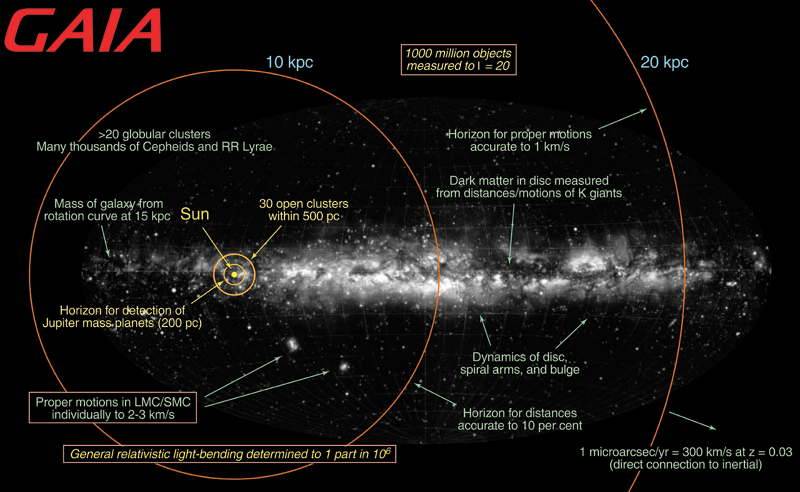
Schematic diagram showing the distances out to which Gaia will contribute to our knowledge of the Galaxy. Image: ESA |
Back to Alessandro Lanzafame's Home Page
Alessandro Lanzafame, last edit 16 November 2008